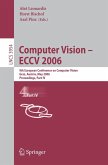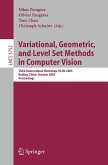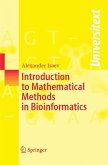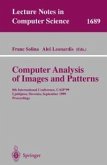Visual perception refers to the ability of understanding the visual information that is provided by the environment. Such a mechanism integrates several human abilities and was studied by many researchers with different scientific origins including philosophy, physiology, biology, neurobiology, mathematics and engineering. In particular in the recent years an effort to understand, formalize and finally reproduce mechanical visual perception systems able to see and understand the environment using computational theories was made by mathematicians, statisticians and engineers. Such a task connects visual tasks with optimization processes and the answer to the visual perception task corresponds to the lowest potential of a task-driven objective function. In this edited volume we present the most prominent mathematical models that are considered in computational vision. To this end, tasks of increasing complexity are considered and we present the state-of-the-art methods to cope with such tasks. The volume consists of six thematic areas that provide answers to the most dominant questions of computational vision:
Image reconstruction,
Segmentation and object extraction,
Shape modeling and registration,
Motion analysis and tracking,
3D from images, geometry and reconstruction
Applications in medical image analysis
Image reconstruction,
Segmentation and object extraction,
Shape modeling and registration,
Motion analysis and tracking,
3D from images, geometry and reconstruction
Applications in medical image analysis
Dieser Download kann aus rechtlichen Gründen nur mit Rechnungsadresse in A, B, BG, CY, CZ, D, DK, EW, E, FIN, F, GR, HR, H, IRL, I, LT, L, LR, M, NL, PL, P, R, S, SLO, SK ausgeliefert werden.
From the reviews:
"The focus of the book is on mathematical methods that both model and reproduce human visual abilities. ... This book is a must-have for those interested in the full breadth of research done in the biological & computer vision community. As a bonus, the chapters can also be used in a seminar-based, advanced undergraduate course in mathematical based computer vision. " (Arjan Kuijper, IAPR Newsletter, October, 2006)
"Computational visual perception can be defined as the discipline of enabling computers to identify features in image data. ... I found this book to be detailed and comprehensive enough to be well worth the time spent on it. Citations linking the text to the relevant literature are profusely sprinkled throughout the text, and a very extensive bibliography is included ... . the production qualities are excellent. ... it should be a useful reference text for researchers or practitioners in this field." (R. M. Malyankar, Computing Reviews, January, 2006)
"The editors of this important compendium view their task as a contribution to modeling and simulating human vision by machine. ... The editors should be congratulated for bringing together high-level researchers to contribute chapters on cutting-edge technologies based on mathematical modeling. This compendium is a solid contribution to the recent literature combining the theories and applications of mathematical modeling to the domain of computer vision." (R. Goldberg, Computing Reviews, June, 2006)
"The focus of the book is on mathematical methods that both model and reproduce human visual abilities. ... This book is a must-have for those interested in the full breadth of research done in the biological & computer vision community. As a bonus, the chapters can also be used in a seminar-based, advanced undergraduate course in mathematical based computer vision. " (Arjan Kuijper, IAPR Newsletter, October, 2006)
"Computational visual perception can be defined as the discipline of enabling computers to identify features in image data. ... I found this book to be detailed and comprehensive enough to be well worth the time spent on it. Citations linking the text to the relevant literature are profusely sprinkled throughout the text, and a very extensive bibliography is included ... . the production qualities are excellent. ... it should be a useful reference text for researchers or practitioners in this field." (R. M. Malyankar, Computing Reviews, January, 2006)
"The editors of this important compendium view their task as a contribution to modeling and simulating human vision by machine. ... The editors should be congratulated for bringing together high-level researchers to contribute chapters on cutting-edge technologies based on mathematical modeling. This compendium is a solid contribution to the recent literature combining the theories and applications of mathematical modeling to the domain of computer vision." (R. Goldberg, Computing Reviews, June, 2006)
The field covered by Computer Vision has become so broad that it is almost impossible to understand what is going on and to keep track of the latest developments. To (partially) overcome this problem, the editors of the Handbook of Mathematical Models in Computer Vision have done a great job. Each chapter gives a general introduction to the topic, introduces the mathematical model, discusses the underlying ideas globally, and shows some results. For the full details the readers are referred to the extensive bibliography with 929 entries. This book is a must-have for those interested in the full breadth of research done in the biological and computer vision community. As a bonus, the chapters can also be used in a seminar-based, advanced undergraduate course in mathematical based computer vision. Reviewed by Arjan Kuijper, IAPR Newsletter 28:4, October 2006









